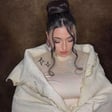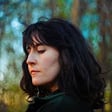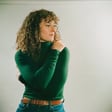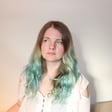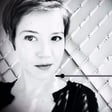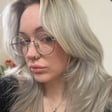
Breanna Cee Martins
"We're all living in a haunted house, and we're all being haunted by it."
Breanna Cee Martins paints the mirage of an America that never existed, for people like her and entire swaths of the population of this country. The artist’s watercolor paintings fall away from the viewer like a half-remembered dream; images of ghostly and phantom children, coming together to explode in kaleidoscopic colors.
Working from found black and white photos, the images metamorphose into Technicolor nightmares, the old made new. Children dressed up as monsters, and monsters dressed up as children; these monochromatic visions glow with infernal light, watching the viewer, watch them. Posed family photos capture the conflicts raging beneath the surface; the pause or unease creating narrative tension, a rift between what is expected and what’s seen, and better left unsaid. They are images captured from the afterglow of a fading star, an apparition of our world growing dimmer amidst the passage of time.
These paintings confront you with pleading eyes, asking the viewer to delve deeper into the question, does this familial imagery have personal meaning to you?
Or, is it evocative of an emotional scene you might have remembered, yet never experienced?
